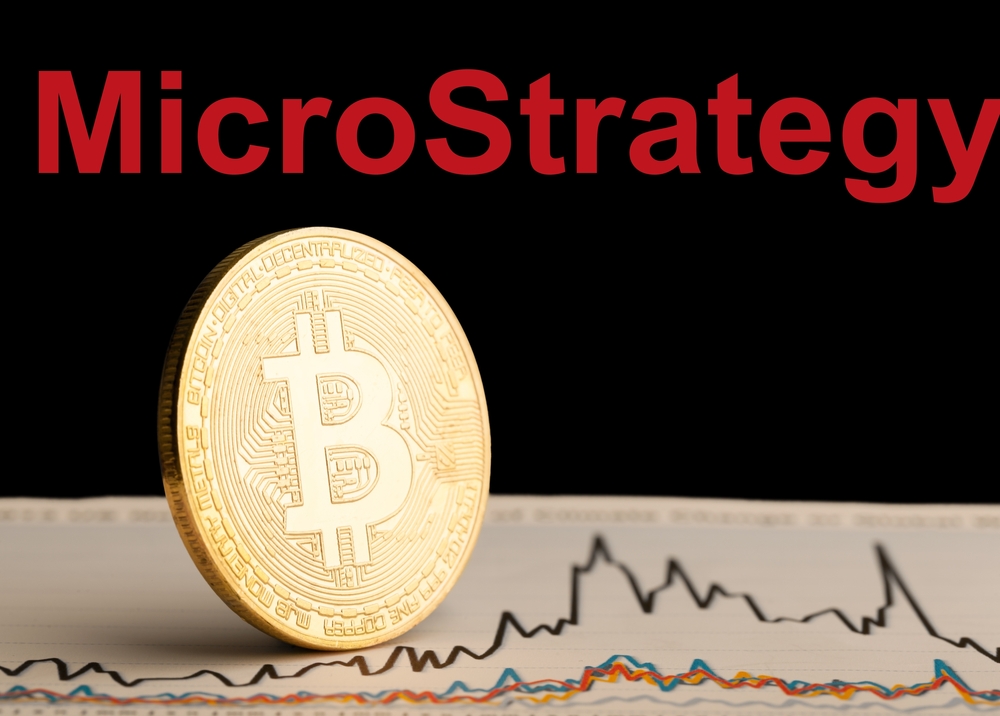Table of Contents
ToggleIntroduction
Decentralized Physical Infrastructure Networks, or DePINs, represent an evolution in the domain of distributed systems, seamlessly integrating blockchain technology with physical infrastructure. The innovative approach of DePINs lies in their use of decentralized ledgers to facilitate the operation, management, and expansion of real-world infrastructure, thus breaking away from traditional centralized models. This integration aims to introduce improved efficiency, security, and resilience to essential services such as energy, transportation, and telecommunications.
The technological underpinnings of DePINs encompass blockchain, the Internet of Things (IoT), and advanced tokenomics, forming a triad that provides mechanisms for secure, autonomous, and economically sustainable infrastructure systems. By leveraging these cutting-edge technologies, DePINs foster transparency and trust between network participants, while also creating a bedrock for diverse applications within various sectors. The networks are designed to be adaptive, catering to the ever-growing demand for infrastructure that can support the burgeoning digital economy.
Key Takeaways
- DePINs leverage blockchain to enhance infrastructure efficiency and security.
- The interplay of IoT and tokenomics in DePINs drives autonomous economic sustainability.
- Adaptability and sector-wide applicability are core to DePINs’ future growth potential.
Fundamentals of DePINs
Decentralized Physical Infrastructure Networks (DePINs) represent a transformative approach to managing physical infrastructure systems. They integrate advanced blockchain technology to enhance autonomy and economic policy adherence among participants.
Conceptual Overview
DePINs are arrays of interconnected physical components, like devices and systems, managed through distributed ledger technology. This blockchain-based framework establishes a decentralized decision-making process and data integrity across the physical infrastructure networks. Such architectures permit autonomous actors to interact in a transparent and secure manner, laying the groundwork for more efficient and self-governing infrastructure systems.
Core Objectives
The primary objectives of DePINs include increasing efficiency, security, and resilience within physical infrastructure networks. By implementing cryptoeconomic systems, DePINs aim to reduce centralized points of failure and provide individual actors with incentives aligned with the network’s health. Tokens play a pivotal role as a means of facilitating transactions and rewarding contributions that benefit the network’s integrity and growth.
Historical Context
Historically, physical infrastructure networks have relied on centralized systems, often leading to inefficiencies and vulnerabilities. The advent of blockchain technology has been a catalyst for the rise of DePINs, offering a foundational change in how such networks are orchestrated and managed. The shift toward this modern paradigm was driven by the need for more adaptive and resilient infrastructure systems capable of withstanding various economic and environmental stresses.
Technological Underpinnings
The foundation of decentralized physical infrastructure networks relies on the interplay of blockchain technology, secure data storage mechanisms, and robust security protocols. Each component is critical for the integrity and functionality of DePINs.
Blockchain Technology
Blockchain technology serves as the backbone for DePINs, enabling distributed ledger functionality that ensures transparency and immutability. Transactions within DePINs are recorded on a blockchain, creating an unalterable and transparent history of interactions. This not only instills trust among participants but also facilitates automated operations through smart contracts — self-executing contracts with the terms of the agreement directly written into code.
Decentralized Data Storage
Decentralized data storage is fundamental to the architecture of DePINs. Rather than relying on centralized repositories, DePINs distribute data across a network of nodes, ensuring redundancy and high availability. This approach mitigates the risks associated with single points of failure, thereby enhancing the resilience of the network. Furthermore, it provides a layer of protection against censorship and data tampering, bolstering the network’s security posture.
Security Protocols
Security within DePINs is multi-faceted, spanning encryption, access control, and ongoing monitoring. Encryption protocols safeguard data both at rest and in transit, while access control mechanisms ensure that only authorized individuals can interact with the network. Moreover, continuous monitoring and anomaly detection systems are employed to quickly identify and mitigate potential security threats, thereby maintaining the integrity of DePINs.
Infrastructure Components
Decentralized Physical Infrastructure Networks (DePINs) are complex systems that hinge on the intricate interplay of their hardware and software components, combined with essential service integrations. These networks leverage the decentralization aspect to enhance the resilience and efficiency of physical infrastructure, using modern technological advancements.
Hardware Aspects
Hardware is the cornerstone of DePINs, providing the essential physical layer upon which all other functions depend. These tangible elements range from sensors and actuators to communication devices. Hardware facilitates real-world interaction and data collection, crucial for the network’s operations. For instance, IoT devices function as data nodes, often deployed across extensive areas, to monitor and manage physical infrastructure like power grids or transportation systems.
- Sensors: Collect environmental data for analysis and decision-making.
- Actuators: Execute actions based on processed data and controls.
- Communications Equipment: Enable data exchange within the network and the internet.
These hardware elements ensure a robust foundation for DePINs, integrating physical components with the virtual layers of the system’s architecture.
Software Layers
DePINs are underpinned by various software layers that manage the collected data, enforce protocols, and facilitate user interactions. Software is crucial for the interpretation of data and execution of tasks. It encompasses:
- Operating systems: They form a bridge between hardware and applications.
- Middleware: Facilitates communication and data management across different technologies.
- Blockchain: Provides a decentralized ledger for transparent and secure transactions within the network.
The software layers enable the network to function autonomously and securely, relying on decentralized consensus mechanisms to validate transactions and interactions.
Service Integration
Services are integrated into DePINs to create value for users and stakeholders. These services can be categorized into infrastructure management, data services, and user interface services:
- Infrastructure Management Services: They deal with the operation and maintenance of physical assets, underpinned by predictive analysis and real-time monitoring.
- Data Services: Include data analytics, storage, and processing, capitalizing on decentralized data sources to optimize decision-making processes.
- User Interface Services: Provide accessible platforms for interaction with the network, ensuring a user-friendly experience.
Service integration promotes seamless functionality of DePINs, enabling complex tasks to be handled efficiently and ensuring that the infrastructure meets the diverse needs of its users.
Economic Models
The economic models embedded within Decentralized Physical Infrastructure Networks (DePIN) are crucial to understand for both participants and investors. They dictate how value is transferred, incentives are aligned, and assets are appraised within the network.
Token Incentives
Tokens are the lifeblood of a DePIN ecosystem, facilitating transactions, rewarding participants, and aligning incentives. For example, specific behaviors like maintaining infrastructure can be incentivized through a burn-and-mint mechanism, which typically reduces supply to create deflationary pressure, thus potentially increasing a token’s value over time if demand remains steady or grows.
Crypto-economic Mechanisms
The crypto-economic mechanisms that govern DePINs ensure the network’s integrity and longevity. These often involve complex algorithms that dictate how tokens circulate within the network. Participants are rewarded or penalized based on their contribution to the network’s health, and these rewards are often tied to the real-time performance and security of the network, acting as a form of network wide vigilance.
Investment and Valuation
Investment in DePIN is influenced by the market capitalization of their native tokens, which reflects the perceived value of the network. Valuation models might consider token supply, transaction volume, and the underlying utility of the network. Prospective investors must analyze the crypto-economic incentives and the potential for token appreciation within the network. The promise of decentralized economies that DePINs foster suggests new frontiers for infrastructure investment, as evidenced by burgeoning projects aimed at creating community-owned physical infrastructure.
Network Participants
Within Decentralized Physical Infrastructure Networks (DePIN), the ecosystem is shaped by the dynamic interplay of various stakeholders. Their roles are defined by their contributions and expectations from the network.
Providers and Developers
Providers are the backbone of DePINs, offering the essential services and infrastructures such as nodes, which are critical for maintaining the decentralized network. They operate the physical components that facilitate the network’s core functionality, epitomized by projects highlighted in A Taxonomy for Blockchain-based Decentralized Physical Infrastructure Networks (DePIN). Developers, on the other hand, are the innovators within these networks, crafting the software that interconnects nodes and creates an environment for DePINs to thrive. They are responsible for the protocol’s underlying architecture and the continuous improvement of the network’s efficiency and security.
End-users
End-users interact directly with the DePINs, utilizing the decentralized applications (dApps) and services provided. They are crucial participants as they generate the demand for innovative solutions that DePINs aim to address. End-users benefit from decentralized services, such as those mentioned in SendingNetwork: Advancing the Future of Decentralized Messaging Networks, leveraging the enhanced security, transparency, and reliability inherent in decentralized models over conventional centralized systems.
Investors
Investors provide the capital needed to develop and scale DePINs. They fund the infrastructure deployment and the application development required for the proliferation of these networks. Investors assess the potential of DePINs to revolutionize various sectors, whether it’s through infrastructure efficiencies or novel consumer applications. Their role is not just financial; investors often bring industry connections, business acumen, and strategic direction to ensure the long-term viability and success of DePIN projects.
Application Sectors
Decentralized Physical Infrastructure Networks (DePIN) are transforming various sectors by leveraging blockchain technologies to enhance the efficiency and security of critical infrastructure services. This includes notable changes in energy distribution, advancements in mobility and the Internet of Things (IoT), as well as improvements in communication systems.
Energy Networks
DePIN applications in energy networks promote the transition toward decentralized energy distribution, enabling peer-to-peer energy trading and improved grid management. By integrating with renewable energy sources, DePIN facilitates a more resilient and sustainable energy landscape, while also offering enhanced transparency in energy transactions.
Mobility and IoT
DePIN’s role in mobility is significant, ensuring secure, transparent, and decentralized data sharing for various transportation systems. For the Internet of Things (IoT), DePIN ensures seamless connectivity and coordination of devices. This includes applications for smart cities where IoT devices operate over decentralized networks, providing services like real-time traffic monitoring and integrated public transport options.
Communication Systems
In communication systems, DePIN underpins the emergence of decentralization in the sector, where services like WiFi hotspots can be managed and monetized through blockchain-based networks. By utilizing DePIN, communication service providers can offer more secure, reliable, and user-governed networks, with potential to disrupt conventional centralized models.
Case Studies
The emergence of Decentralized Physical Infrastructure Networks (DePIN) is exemplified through distinct case studies, each showcasing unique applications and implementations of decentralized technology in various domains.
Helium Network
Helium Network represents a notable venture in DePIN through the establishment of a decentralized wireless infrastructure. Utilizing a blockchain-based incentive model, participants deploy Hotspots which provide network coverage and, in turn, receive Helium tokens as a reward. To date, the Helium network has seen thousands of Hotspots deployed worldwide, creating a wide-reaching mesh network that supports a variety of Internet of Things (IoT) devices.
Filecoin Storage
In the realm of decentralized storage solutions, Filecoin stands as a pioneering example. Leveraging a network of distributed nodes, it safely stores data across multiple locations to ensure redundancy and security. The Filecoin network functions through a marketplace where users pay with Filecoin tokens to have their data stored, and storage providers are compensated for their available disk space, making it an economically viable alternative to centralized cloud storage services.
HiveMapper Mapping
Lastly, HiveMapper offers an innovative approach to mapping and updating cartographic data by employing a decentralized contributor base. Individuals contribute their locally captured video footage, which HiveMapper then converts into valuable map edits and updates. The project illustrates the potential for decentralized networks to disrupt traditional methods of data collection and maintenance in the field of mapping.
Challenges and Limitations
While Decentralized Physical Infrastructure Networks promise innovative solutions and greater autonomy, they are not free from challenges and limitations that can impact scalability, regulatory compliance, security, and resilience.
Scalability Issues
Decentralized Physical Infrastructure Networks (DePINs) often face significant scalability issues. The ambition is to grow these networks to accommodate an increasing number of users and transactions. However, scalability can be hindered due to the inherent complexities of distributed systems, which can lead to congested networks and slow performance when not adequately addressed. For instance, as detailed in the Generalised DePIN Protocol, the advancement of current physical infrastructure networks is continually testing the limits of what can be achieved within existing frameworks.
Regulatory Hurdles
Regulatory hurdles present another substantial challenge for DePINs. Each country has its own legal framework, which may conflict with the decentralized and borderless nature of DePINs, making widespread adoption a complex process. The development and deployment of such networks must navigate an intricate web of regulations, differing from one jurisdiction to another. The PDF Document on High Precision GNSS Positioning discusses utilizing web3 to enhance the mass adoption of these systems, suggesting that overcoming regulatory obstacles is key to realizing the full potential of DePINs.
Technical Barriers
Lastly, DePINs encounter technical barriers. These barriers comprise issues related to privacy, security, and data sovereignty, as described in context with decentralized messaging networks like the SendingNetwork. Establishing a secure and resilient network that protects user data without central oversight is no small feat. Technical challenges such as network vulnerabilities, the potential for data breaches, and maintaining uptime are formidable obstacles that require constant attention and advancement to ensure the reliable performance of DePINs.
Future of DePINs
Decentralized Physical Infrastructure Networks, or DePINs, represent a significant shift in how infrastructure is managed and operated. With a foundation in blockchain technology, DePINs are poised to revolutionize various sectors through enhanced security, transparency, and efficiency.
Innovation Trajectory
DePINs are continuously evolving, propelled by advancements in blockchain technology and Internet of Things (IoT) integrations. One notable progression in the field of DePINs is the establishment of a rollup-centric scalable architecture. This architecture aims to reduce costs and increase transaction throughput, making the deployment of DePINs more practical and accessible. A rollup-centric approach can potentially magnify the impact of DePINs by enhancing their scalability and interoperability.
Emerging Trends
Trends in DePINs suggest a move towards more robust smart contract protocols and tokenomics models, which can provide layers of incentive and governance. The application of burn-and-mint tokenomics is anticipated to create deflationary mechanisms, encouraging sustainable development in the ecosystem and optimizing asset value over time. This tokenomics approach could become a pivotal element in maintaining the economic stability of decentralized networks.
Long-term Projections
Long-term forecasts for DePINs involve a widespread integration into global physical infrastructure systems. They are expected to lay the groundwork for community-owned networks that fundamentally alter how assets and resources are shared and monetized. The utility of DePINs could extend far beyond current use cases, leading to a transformative impact on urban development, logistics, and even high precision positioning systems thanks to the utilization of advanced GNSS technology. The convergence of DePINs with other emerging technologies indicates that they could become an integral part of the digital landscape of the future.
Frequently Asked Questions
In this section, we address common inquiries regarding decentralized physical infrastructure networks (DePIN), clarifying their unique features and their role in the evolving digital landscape.
What are the core characteristics of decentralized physical infrastructure networks?
Decentralized physical infrastructure networks are designed with the principles of decentralization at their core, which include distributed control, resistance to censorship, and enhanced security. These networks rely on a decentralized approach to managing and operating a physical infrastructure that is collectively owned and maintained by a network of participants.
How do DePIN projects enhance the capabilities of blockchain technology?
DePIN projects leverage blockchain technology to create secure and transparent networks for various use cases. They enhance blockchain capabilities by providing a more resilient physical layer that works in tandem with the digital ledger, ensuring integrity and continuity of services in the blockchain ecosystem.
What are some leading examples of crypto projects utilizing DePIN principles?
Crypto projects such as ONOCOY are emerging as leading examples of DePIN adoption, pushing the boundaries of high-precision GNSS positioning. By building community-owned infrastructure, these projects offer new avenues for decentralized economies to thrive.
In what ways is DePIN integrated within the IoT ecosystem, particularly through platforms like IoTeX?
Within the IoT ecosystem, DePIN is integrated by enabling a multitude of devices to connect and interact in a secure, decentralized manner. Platforms like IoTeX facilitate this integration by providing the infrastructure that connects physical devices with blockchain technology, ensuring trustless interactions and data integrity.
How does DePIN differ from traditional centralized physical infrastructure?
DePIN is distinct from traditional infrastructure due to its lack of central control and single points of failure. It promotes a more equitable and participatory model where stakeholders have shared control and responsibility, contrasting with the hierarchical, top-down structure of conventional systems.
What are potential benefits and challenges associated with the adoption of DePIN in Web3?
The adoption of DePIN in Web3 promises increased security, lower costs, and enhanced efficiency. However, it faces challenges such as scalability, complex governance models, and the need for widespread technical and societal acceptance. Balancing these benefits and challenges is crucial for the successful integration of DePIN in the decentralized web.












